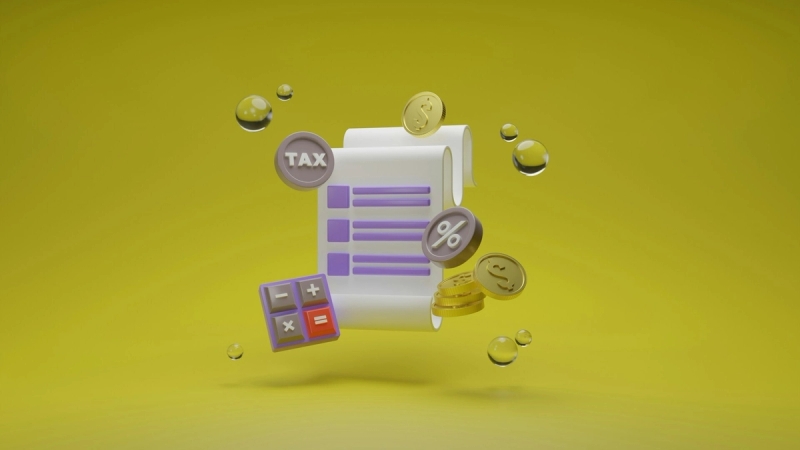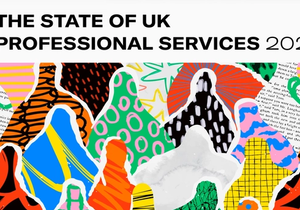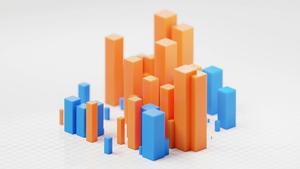Invoicing might look straightforward, but it can become a headache when not handled efficiently. One missed detail and you’re dealing with late payments, frustrated clients, and confusing records. For many businesses, invoicing is a task that should be quick but often ends up stealing time and energy that could be used elsewhere.
But It doesn’t have to be this way. Today, we’ll share some ready-to-use sales invoice templates and guide you through creating your own.
What are sales invoices?
A sales invoice is an accounting document that records a business transaction, detailing the products or services a business provides.
It usually includes:
- the description of items or services
- the unit price for each item
- the total amount due
- applicable taxes or late payment fees.
Why are sales invoices important in the sales process?
Sales invoices do more than just confirm a purchase. Here’s how they add value to the sales process:
Track and analyze business performance
Sales invoices provide a record of every transaction, which allows you to monitor your business’s performance over time.
Imagine you offered consulting services to a client who reached out via LinkedIn. Without an invoice, there’s no formal record of the sale, making it hard to track your income from these one-off jobs.
With invoices in place, you can spot patterns like seasonal demand shifts, gauge year-over-year growth, and identify areas for improvement, such as adjusting product prices or bundling popular services.
Unlike simple receipts, invoices offer the structured, detailed data you need for better business insights.
Facilitate payment requests and reduce misunderstandings
Detailed invoices make payment requests easier to understand.
For example, if you provided design services to a new client, sending a sales invoice with itemized charges, payment terms, and a due date reduces any ambiguity about what’s owed and when.
When all payment details are upfront, there’s no need for additional follow-up or clarification – which saves time and helps avoid delays.
The result? Less back-and-forth and faster payments.
Optimize tax preparation and compliance
Sales invoices organize your income and document any sales tax collected. Well-organized invoices reduce the stress of tax season, ensuring you have everything needed for accurate income reporting. And if you’re audited, having complete invoices saves you from scrambling for proof, keeping your business in good standing with tax authorities.
Types of sales invoices
Below, you'll find a few types of sales invoices, along with examples you can easily copy and adjust for your business needs.
Standard invoice
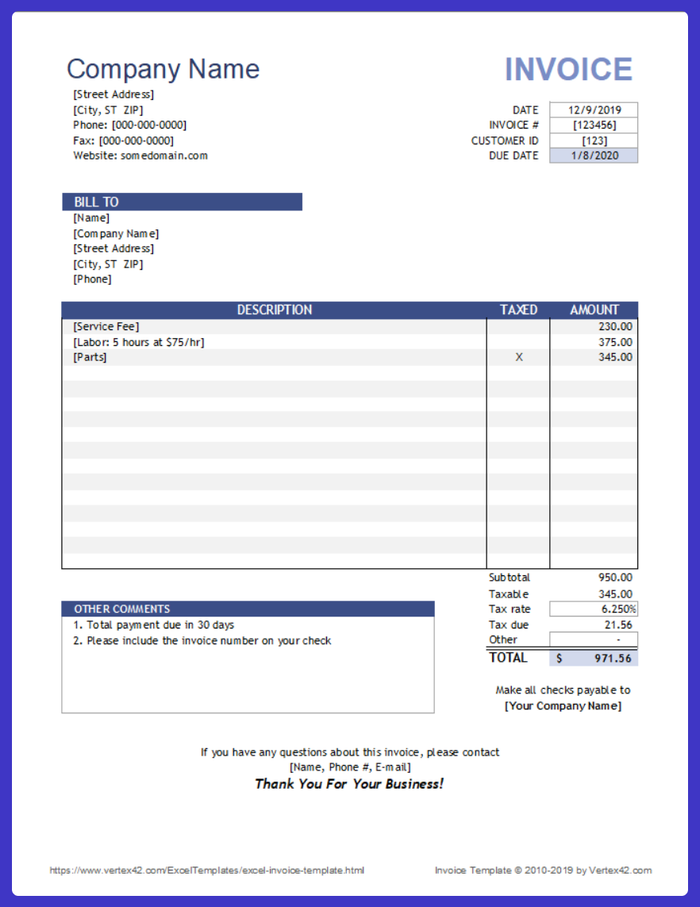
A standard invoice is the most widely used format in business transactions, capturing essential details like the items or services sold, their prices, and the total amount due. It also includes the seller's and buyer's contact information, invoice number, and date. Typically issued after goods are delivered or services completed, standard invoices safeguard financial records and legal compliance.
One advantage of standard invoices is their flexibility – since they’re generally formatted, they’re easy to personalize with company logos, custom messages, or specific payment terms to suit business needs.
Proforma invoice
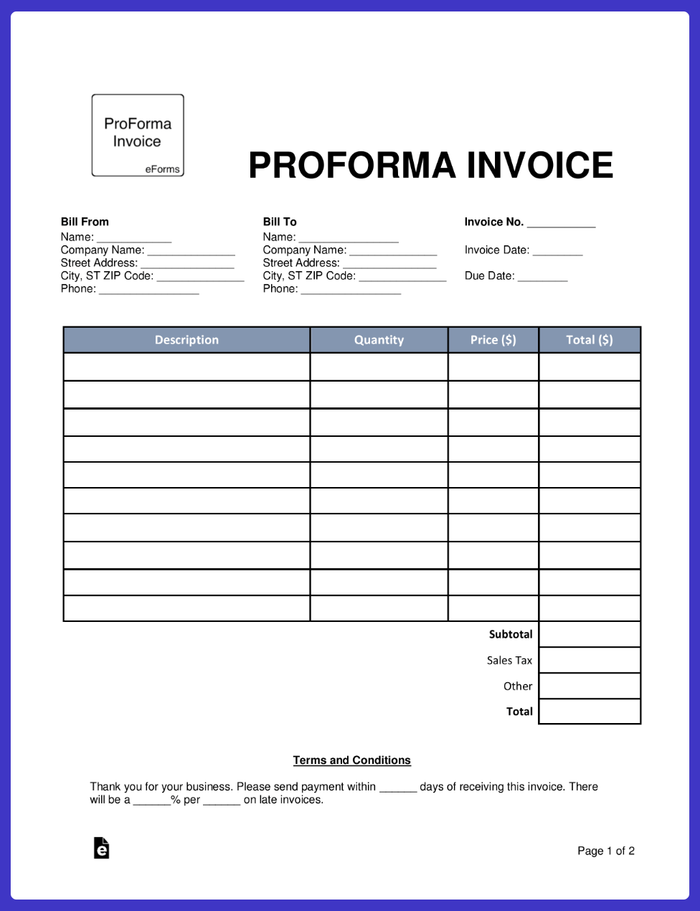
A proforma invoice is sent before a sale is finalized, detailing expected items or services, estimated costs, and terms.
It serves as a preliminary bill, giving the customer a clear view of charges and conditions without requiring immediate payment. This helps customers plan budgets and gain approvals before completing the transaction.
Recurring invoice
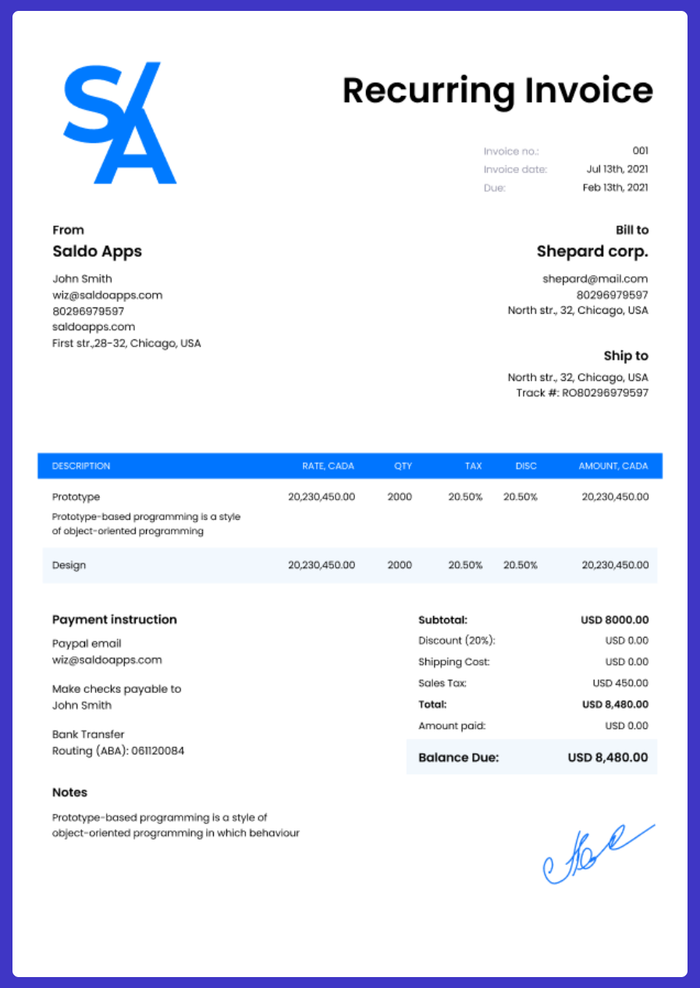
Recurring invoices are typically used in subscription-based businesses, such as SaaS, to bill customers for services delivered at regular intervals. This type of invoice is often automated, ensuring timely billing and payment collection without manually issuing an invoice each cycle.
It’s ideal for businesses that rely on consistent, periodic billing.
Commercial invoice

Commercial invoices are essential for international trade, offering a level of detail not found in standard invoices. Beyond basic transaction details, they include precise descriptions of goods, their country of origin, Harmonized System (HS) codes, total weight, and the purpose of export.
Customs authorities use this information to calculate duties, taxes, and tariffs accurately and to assess regulatory compliance when necessary.
Creating a sales invoice template: steps and tips
Using a template is a great starting point for creating sales invoices, but keep in mind that templates often need a lot of personalization. You might try a few ready-to-go templates, only to find they’re missing crucial fields or don’t quite fit your business style, leading to hours of edits and adjustments.
That’s why we’ve compiled this quick guide to help you create your invoice template. Follow these steps to make sure that your sales invoices look professional and are perfectly suited to your business.
Step one: Label clearly
Label the document as “Sales invoice” at the top to avoid any confusion with other documents. Adding the client’s name to the title and file name can also help you quickly locate or filter the invoice when needed.

Step two: Include relevant contact information
Add essential details like your company name, billing address, phone number, and email. Including a logo is optional but can help personalize the invoice for better brand recognition.
For some invoice types, such as international or commercial invoices, it’s also helpful to add additional identifiers like tax ID or VAT numbers. The document is then compliant with any specific billing standards.
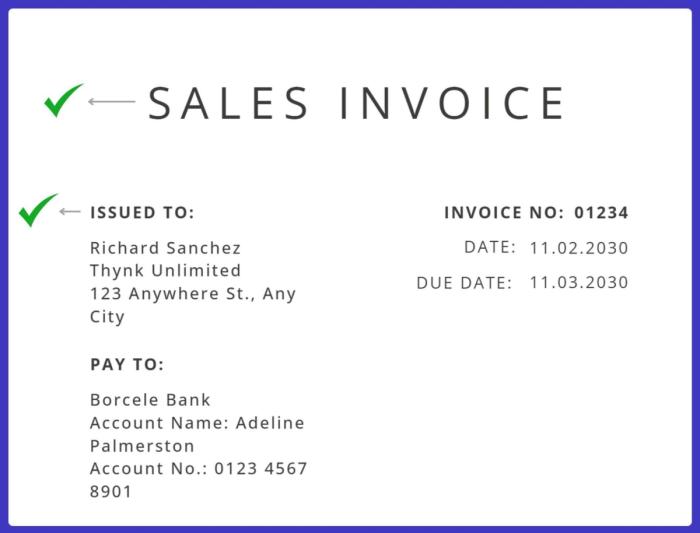
Step three: Number and date each invoice
Place a unique invoice number and date near the top to keep tracking and accounting organized.
Common numbering practices include:
- using sequential numbers (e.g., 001, 002),
- adding the date (e.g., 2023-001 for January’s first invoice),
- or combining the client’s name with the invoice number (e.g., SMITH-005).
A transparent numbering system helps you quickly locate invoices and reduces the risk of duplicates.
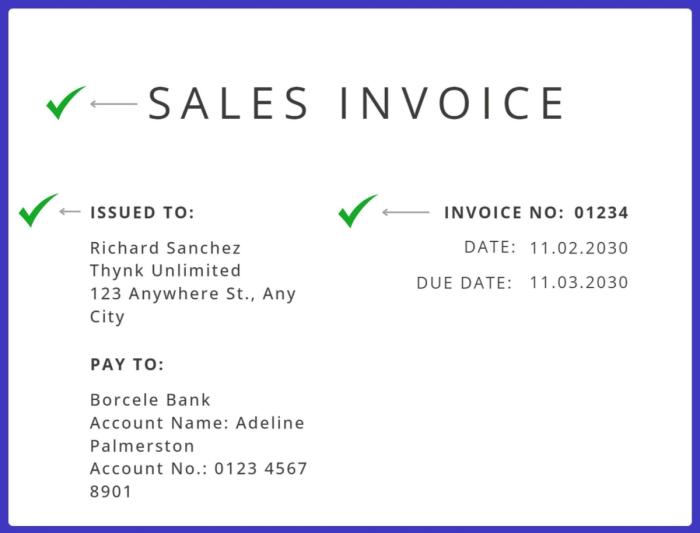
Step four: List items or services
Use a clear line-item format to detail each product or service.
For products, include a description, quantity, and unit price (e.g., “Laptop – 2 units at $700 each”).
For services, specify the service provided, hours or units billed, and the rate (e.g., “Consulting – 5 hours / $100 per hour”).
Consider grouping similar items or phases of a project to make the invoice easy to follow. In addition to facilitating accurate record-keeping, this clarity also enhances transparency for buyers.
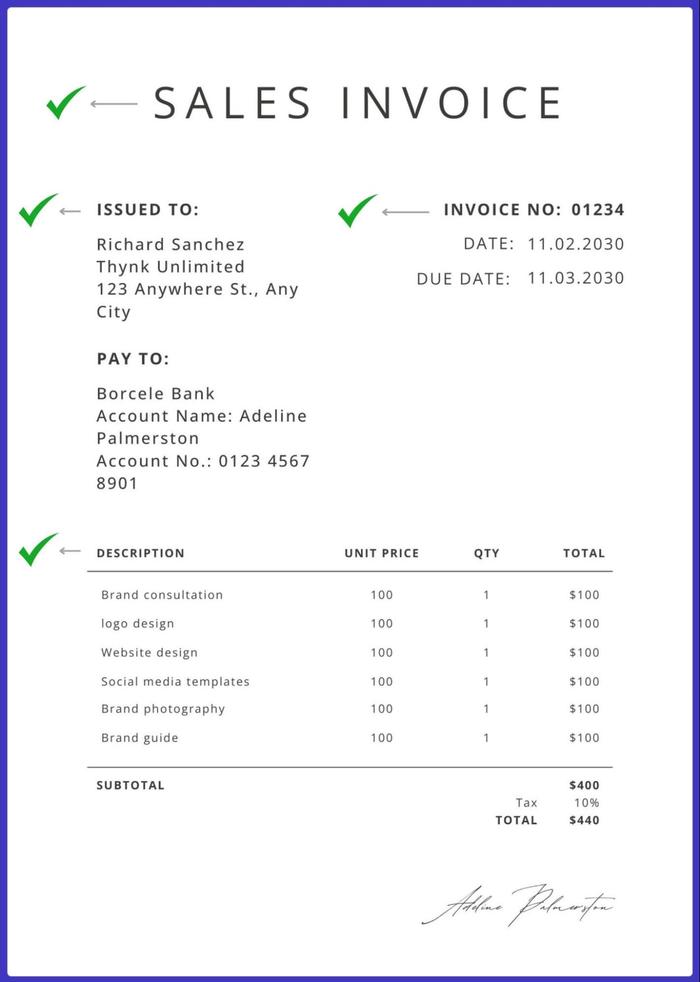
Step five: Explain payment terms
Clearly outline payment terms, including the due date and any accepted payment methods. If applicable, note any late payment penalties to encourage timely payments.
Standard payment terms include:
- Net 30: Payment is due 30 days after the invoice date
- Net 15: Payment is due 15 days after the invoice date
- Due on receipt: Payment is due immediately upon receiving the invoice
- 2/10 net 30: A 2% discount if paid within 10 days; otherwise, the full amount is due in 30 days
- End of month (EOM): Payment is due by the end of the month in which the invoice was issued
- Quarterly payment: Payment is due every three months, often for ongoing services.
- 50% upfront, 50% on completion: Half of the payment is due before starting, and the rest upon project completion.
- Milestone-based: Payment due at specific project milestones, like completion of phases or deliverables.
A clear set of payment terms sets clear expectations for everyone involved.

Use this free sales invoice template.
Step six: send and monitor the invoice
Wondering if your invoice actually reached the client? After sending it, track its status to confirm it was opened – many invoicing tools or email software provide this feature.
If the due date is nearing and there’s no response, set up reminders or schedule follow-ups to keep things on track. Monitoring each invoice helps you spot issues early, follow up with confidence, and maintain a steady cash flow.
Best practices for sales invoices
Use these steps as a checklist to ensure your sales invoices are clear, professional, and effective for tracking sales transactions.
Be clear and concise in your invoice language
Direct, simple language in your invoice makes it easy for clients to understand, reducing the need for additional follow-ups to clarify details. Avoid vague terms, which could delay payment.
Here’s a couple of examples of unclear language you can replace with clear details:
❌ Various marketing services
✅ Website design and development services for October 2024
❌ Due the end of the week
✅ Payment due by November 15, 2024 (Net 30)
Tip: If you’re using a free sales invoice template, double-check that it includes all necessary details, as these templates can sometimes be too generic. Adjust the content to ensure clients know exactly what goods or services they’re paying for.
Check grammar and spelling for full accuracy
Even a single error in an invoice can lead to misunderstandings or create a negative impression with the client’s accounting department. Misspelling a client’s name or brand can be particularly damaging to your professional image.
Tip: Carefully proofread each invoice before sending it. Using tools like Grammarly can catch errors and polish your sales invoices.
Send invoices promptly so that they can be paid on time
Timely invoicing supports a smoother cash flow. Sending the invoice right after completing the sale or service reminds clients to request payment without delay.
And by invoicing immediately, you encourage clients to process payment sooner – which means quicker access to funds for you, too!
Tip: Integrate your invoicing software with your CRM to quickly generate invoices with the client’s details. This setup also enables you to plan timely follow-ups and reminders, if needed, to keep payments on track.
Stay organized by keeping track of invoices and payments
How can you manage your cash flow if you don’t know which invoices are still outstanding? Keeping records of all sales transactions, including sales invoices and receipts, lets you track payment status, follow up as needed, and maintain steady cash flow.
Tip: Create a consistent method for labeling invoices with unique numbers. Track them in an organized database – making it easy to reference invoices or sales receipts at any time.
Bonus tip: use your CRM for invoicing
Capsule CRM is a customer relationship management system that integrates with Xero or Quickbooks, both full-featured accounting software. The tools let you synchronize customer data, automate invoicing, and gain a real-time overview of financial transactions.

Integrating Capsule CRM with Xero offers a unified platform for managing customer relationships and financial transactions. Users can make the most of:
- Data synchronization. Updates to customer information in Capsule are automatically reflected in Xero, helping to maintain consistent and up-to-date records.
- Invoicing and payments. Users can generate and send invoices and track payments directly within Capsule CRM.
- Financial overview. Capsule provides a comprehensive view of a customer's financial interactions, communication history, and sales pipeline, all within a single platform.
- Real-time updates. Invoice data is automatically synchronized between Capsule and Xero so that your financial information is current and accurate.
- Centralized control. Managing customer relationships and financials in one place improves workflow efficiency.
Using Capsule CRM with its integrations instead of standard invoice templates offers a more advanced and integrated approach to managing financial transactions.
Watch how easy it is to set it up:
Invalid YouTube URL: https://capsulecrm.com/resources/video/xero-integration-setup/
Check out other Capsule’s integrations related to invoicing and accounting.
Conclusion
Sales invoices don’t have to be those pesky documents keeping you up at night. Done right, they’re tools that help track sales, reveal business insights, and keep records tidy without the headache. With free templates and automation, invoicing becomes quick and clear.
Capsule makes it even easier by bringing invoicing and client data together in one spot. Why not try it today?
Frequently Asked Questions
To create a sales invoice, start with a clear header labeled "Sales invoice." Include your business details, client information, an itemized list of goods or services, and the total amount due. Use free sales invoice templates for convenience. Make sure it includes a unique invoice number and date for accurate tracking.
A sales invoice specifically records a sale, listing goods or services provided and the amount due. An invoice can cover any billing request, including estimates or advance payments. Unlike a simple sales receipt, a sales invoice is a formal document often sent after a fulfilled purchase order.
Yes, you can create your own invoice by including essential details: business name, client information, itemized charges, and payment terms. Free sales invoice templates simplify the process. However, for accuracy in issuing sales invoices, double-check legal requirements and industry standards to ensure professionalism and compliance.
Request payment messages are reminders sent to clients about outstanding payments. They usually include invoice details, payment terms, and a polite prompt to pay the remaining balance. These messages often reference the original sales invoice too.
Issuing sales invoices requires business details, client information, and itemized charges. Include a unique invoice number, date, and any reference to your purchase order. Many use sales invoice templates to simplify this process to maintain consistency.
A sales invoice includes the seller’s business details, client information, itemized goods or services provided, total amount due, and payment terms. It may also reference a purchase order, helping the client track related documentation. For efficiency, free sales invoice templates often cover these essential fields.
The invoice date typically goes near the top of the document, below the header and unique invoice number. This date marks when the sale was recorded, starting the payment terms.
